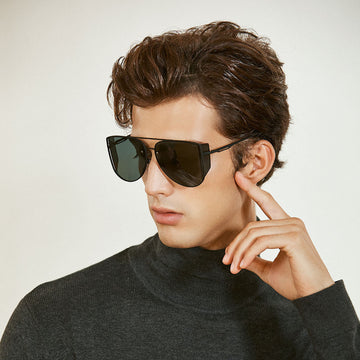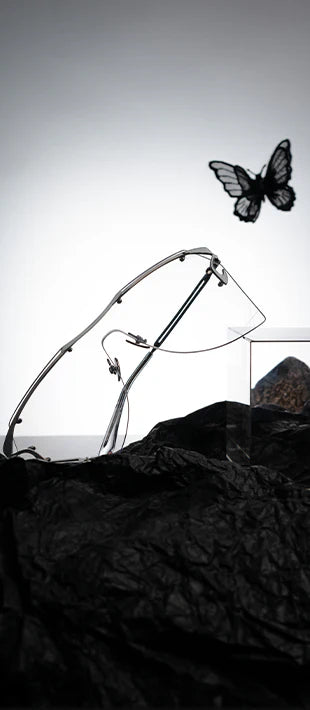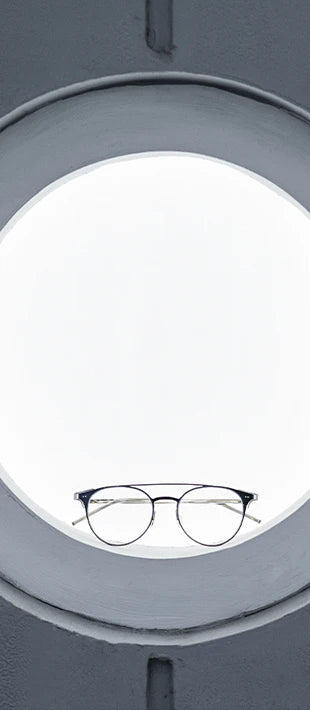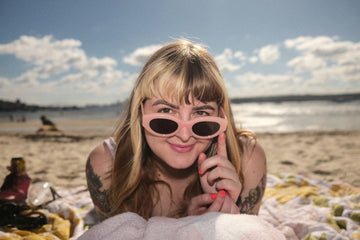As summer approaches, visions of azure waters and sun-drenched shores beckon travelers to destinations like Greece's Crete Island, where lies Elafonissi Beach, one of the top ten beaches in the world. This article will show why your beach holiday demands more than a generic pair of shades and deliver actionable insights for selecting sunglasses that marry safety, comfort, and style. Let's dive in!
Why Need a Pair of Good Sunglasses for a Beach Holiday?
1. Why Category 3 Sunglasses Are Non-Negotiable
The Science of UV Protection: Generally, when the UV Index ranges from 3 to 5, it's advisable to wear UV sunglasses. During summer, UV Index levels in Europe and the Americas can reach 6 to 8, and in high-altitude or equatorial regions, they may approach 10. Therefore, wearing high-quality sunglasses is essential, even in areas where sunlight doesn't feel particularly intense.
Sunglasses category level refers to visible light transmission rate. Category 3 sunglasses, which filter 82–92% of visible light while blocking 100% of UVA/UVB rays, are ideal for bright seaside sun. By contrast, lightly tinted Category 0 or 1 lenses barely cut glare. Category 4 sunglasses are the darkest that are intended for extreme conditions like mountain skiing and are too dark for driving or general use. Therefore, category 3 sunglasses are essential.
Sunglasses with UVA protection below 86% pose potential risks, as they may allow more UV radiation into the eyes than not wearing sunglasses at all. A study by Masili, Duarte, and Ventura (2024) concludes that poor UV protection increases UV exposure due to expanded visual fields in darker environments, not pupil dilation, and even on cloudy days or at altitude, reflected UV from water and sand can harm eyes.
100% UVA/UVB sunglasses mean that they protect your eyes from the sun's harmful ultraviolet (UV) radiation, specifically UVA rays (longer wavelengths) and UVB rays (shorter wavelengths). So UV coating is a must.

2. Polarized Lenses: Your Secret Weapon Against Glare
High-quality polarized sunglasses use an embedded filter—it works like a built-in Venetian blind—to block horizontal rays, thereby subduing the piercing glare of sunlight reflecting off water or ice.
For example, on Crete Island, July's UV index of 10 means reflective surfaces like sand and water amplify radiation exposure. Polarized lenses have a special filter that blocks horizontal reflections—like light bouncing off water or wet sand.

Polarized vs non-polarized sunglasses visual effect
Harvard Health notes that polarized sunglasses “reduce the glare caused by reflected light on horizontal surfaces.” By cutting glare, polarized lenses improve contrast and comfort, making objects sharper and eyes less strained. They are ideal for activities around water: boating, fishing, paddleboarding, or even strolling on wet rocks.
Keep in mind polarized lenses don’t equal UV filtering—a pair of polarized sunglasses still needs a UVA/UVB coating.
EPOCH - Round polarized sunglasses
3. Digital Detox: Give Your Eyes a Real Break
Your beach vacation may be a chance to unplug from screens, which already helps reduce digital eye strain. But relaxing on the shore isn’t a break for your eyes unless you guard them from sunlight and glare. Even away from screens, your eyes need full protection. Enjoy your vacation knowing that by wearing Category 3 UV shades (preferably polarized), your eyes can finally relax without hidden damage.
How to Choose a Pair of Good Sunglasses
1. UV Protection:
Decoding the Labels with UVA/UVB Certification: Blocks wavelengths up to 400nm (the entire UV spectrum).
Category Codes: Look for “Cat 3” stamped on the arm, indicating 82–92% VLT (Visible Light Transmission).
Quality certificate: Look for “CE” stamped on the temple, signifying the sunglasses comply with European Union (EU) safety, health, and environmental protection standards.
2. Lens Materials:

3. Comfort & Fit



4. Color Psychology and Style
Final Takeaways:
2. Prioritize Category 3 sunglasses for balanced protection across holiday and working days.
3. Polarized lenses are crucial for a beach or island holiday.
4. Fit over fashion, and you deserve premium sunglasses for your eyes, style, and relaxing holiday.
Frank, C. (2024). Polarized sunglasses: Protecting your eyes from harmful glare - Harvard Health. Harvard Health. https://www.health.harvard.edu/staying-healthy/polarized-sunglasses-protecting-your-eyes-from-harmful-glare















